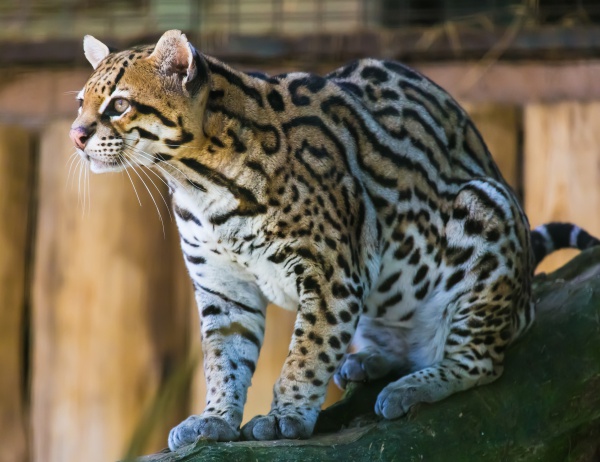Facts About Ocelot
The ocelot is a small wild cat that inhabits the southwestern United States, Mexico, and parts of Central and South America. It is easily recognizable by its striking coat, adorned with solid black spots and streaks, as well as its round ears and white neck and underparts. Carl Linnaeus first described the ocelot in 1758, identifying two subspecies: L. p. pardalis and L. p. mitis.
These cats are most active during twilight and nighttime hours. They are solitary and highly territorial creatures. Ocelots are skilled climbers, leapers, and swimmers, primarily hunting small mammals such as armadillos, opossums, and rabbits. They reach sexual maturity around two years old and can breed year-round. After a gestation period of two to three months, females give birth to one to three kittens. These kittens remain with their mother for up to two years before establishing their own territories.
Ocelots thrive in areas with dense vegetation, abundant prey, and access to water. However, they face numerous threats, including habitat destruction, hunting, and traffic accidents, which have caused their populations to decline in many areas. Historically, ocelots have had significant ties with human civilizations like the Aztecs and Incas and have occasionally been kept as pets.
The name "ocelot" comes from the Nahuatl word ōcēlōtl or the Latin word ocellatus, both referring to the cat's spotted coat. The ocelot's taxonomy has been extensively studied, leading to the identification of various subspecies based on morphological and genetic differences.
This fascinating feline's characteristics, habitat preferences, behavior, diet, and reproduction have been well documented. Despite being listed as Least Concern on the IUCN Red List, ocelot populations are shrinking in certain regions due to human-related threats. Conservation efforts, including captive breeding programs, are crucial for ensuring their survival.

 Guatemala
Guatemala